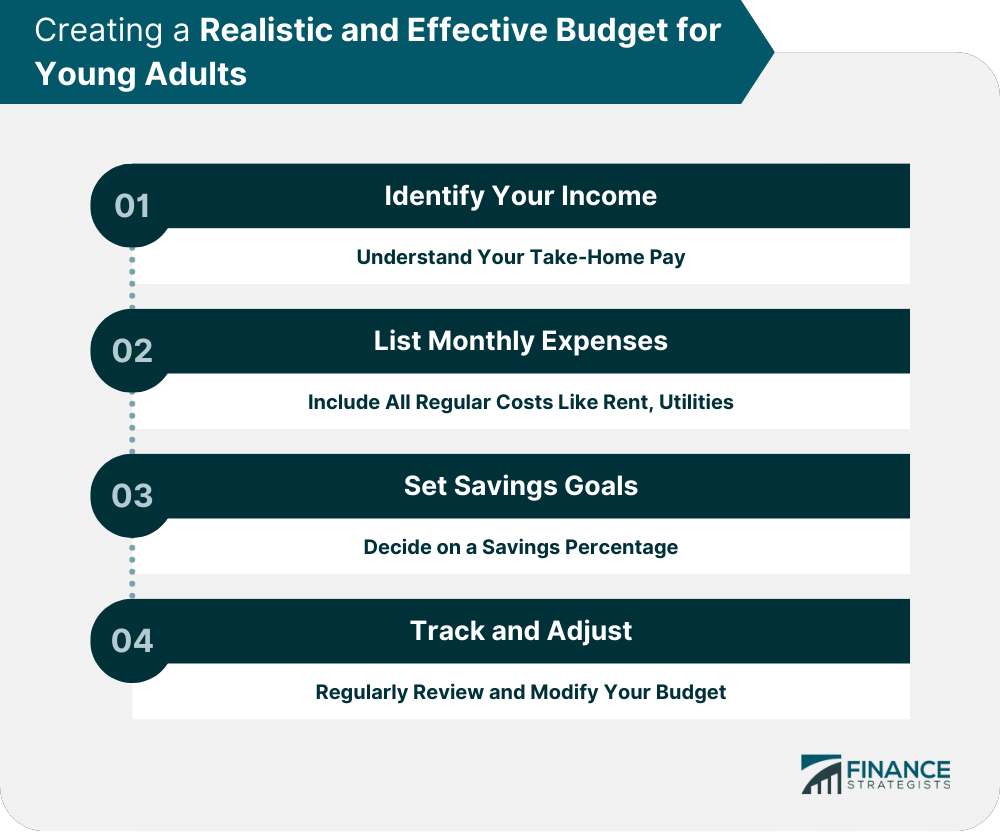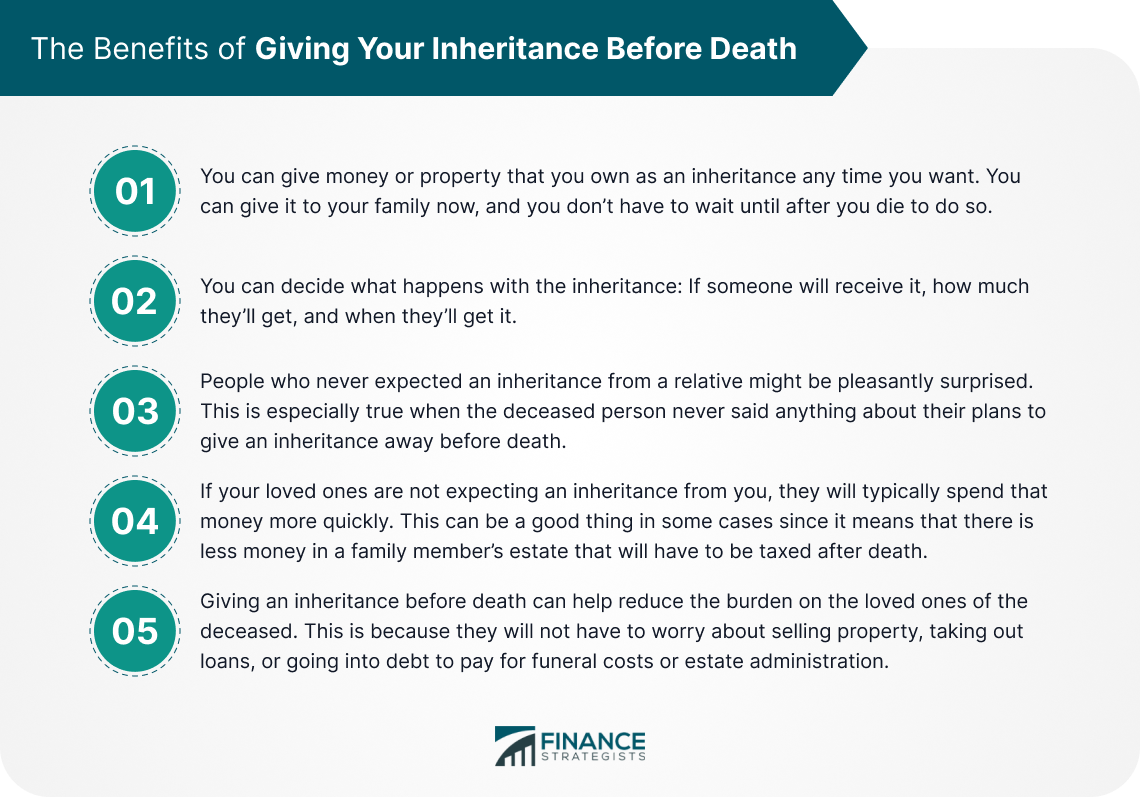
Many of us have started a budgeting journey with the best intentions, perhaps opening a spreadsheet with grand financial dreams or downloading an app that saw only a few weeks of use before fading into the digital ether. The common thread in these experiences is often the realization that budgeting isn’t a one-size-fits-all solution; what works for one person might feel restrictive or ineffective for another. The sheer number of financial strategies available can be overwhelming, making it difficult to pinpoint a method that truly resonates with your unique lifestyle and financial aspirations.
However, the core truth remains: understanding and managing your money effectively is a cornerstone of financial stability and peace of mind. A successful budget plan helps you decide how to best spend your money while setting aside some for savings and avoiding or reducing debt. It’s about taking control of your financial narrative, moving from reactive spending to proactive planning, and making informed decisions about where every dollar goes.
This in-depth guide is designed to cut through the noise, offering a clear and direct exploration of various popular budgeting techniques and strategies. Our goal is to equip you with the knowledge to identify a budgeting method that not only fits your current financial situation but also supports your long-term goals, whether you’re a beginner seeking structure or a seasoned saver looking for a fresh approach. We’ll delve into the mechanics, benefits, and ideal candidates for each method, empowering you to make the most suitable choice for your financial well-being.
1. **The 50/30/20 Rule**This budgeting principle stands out as one of the simplest, most foolproof, and strategic methods for managing personal finances. It offers a broad, easy-to-understand framework that allocates specific percentages of your after-tax income to key spending categories. Essentially, it suggests that you dedicate 50% of your take-home pay to needs, 30% to wants, and the remaining 20% to savings and debt repayment.
NerdWallet’s budget template, for instance, prominently incorporates this rule, viewing it not as a strict, unyielding command, but rather as an ideal to consistently work toward. This distinction is crucial, as it acknowledges that life circumstances can fluctuate, and adhering rigidly to any financial guideline isn’t always feasible. The rule provides a clear, high-level overview, making it straightforward to assess whether your spending habits align with healthy financial proportions without micromanaging every transaction.
The 50% allocated to needs covers essential expenditures that you simply cannot live without. This includes vital items such as housing payments (rent or mortgage), utility bills, insurance premiums, and groceries. These are the fixed costs and irreducible variable costs that ensure your basic living requirements are met, forming the foundation of your financial security. Understanding and accurately tracking these fundamental expenses is the first critical step in applying the 50/30/20 rule effectively.
The 30% for wants encompasses discretionary spending—things that enhance your lifestyle but aren’t strictly necessary for survival. This category often includes dining out, entertainment, travel, shopping for non-essential items, and streaming service subscriptions. It represents your ‘fun money,’ allowing for enjoyment and personal enrichment within a controlled framework. Meanwhile, the 20% dedicated to savings and debt repayment is crucial for building wealth and reducing financial burdens, covering contributions to emergency funds, retirement accounts, or paying down credit card and loan balances. This method is particularly well-suited for beginners who need clear training wheels and for anyone seeking a manageable, big-picture approach to their money.
Read more about: Remember These Financial Game-Changers? 10 Budgeting Methods That Absolutely Mastered It as Reliability Legends.

2. **Zero-Based Budgeting**For those who thrive on precision and accountability, zero-based budgeting offers a compelling solution by ensuring that every single dollar of your income is assigned a specific purpose. With this approach, nothing is left unassigned or unaccounted for; it’s a meticulous method where you give every bit of your paycheck a job until your budget balances out to zero. This means that after all income and expenses are factored in, you shouldn’t have any ‘mystery money’ lingering without a destination.
The fundamental principle behind zero-based budgeting is intentionality. Rather than simply tracking where your money went, this method demands that you decide beforehand where it *will* go. Whether it’s rent, savings contributions, gas for your car, or even that occasional indulgence like a takeout meal, every item in your financial plan receives an allocation. This proactive assignment of funds makes it nearly impossible for dollars to slip through the cracks, providing a transparent and detailed view of your cash flow.
This system is particularly effective for individuals who tend to overspend or those who are naturally meticulous about tracking their finances. By compelling you to plan for every cent, it fosters a heightened awareness of your spending habits and encourages disciplined financial behavior. It transforms your budget from a general guideline into a precise roadmap, offering a profound sense of control over your economic life. For example, if your monthly take-home pay is $3,000, you would meticulously plan for every bit of that sum.
Imagine allocating specific amounts to housing, groceries, various debt payments, and savings. If, after covering all your essentials, you find yourself with $200 left unassigned, zero-based budgeting mandates that you give that money a purpose too. Perhaps it’s directed towards entertainment, a special dining experience, or an extra contribution to a savings goal. This constant need to assign a role to every dollar helps prevent impulsive spending and keeps you laser-focused on your financial objectives, making it an excellent strategy for those committed to crushing debt or simply achieving ultimate clarity on their cash flow.
Read more about: Remember These Financial Game-Changers? 10 Budgeting Methods That Absolutely Mastered It as Reliability Legends.

3. **Cash Stuffing (or the “Envelope Method”)**The cash envelope system is a tactile and highly effective budgeting method, especially for those who struggle with impulse spending and require clear, physical limits. This classic technique, which has seen a resurgence in popularity, particularly through online communities, operates on a straightforward premise: you allocate a set amount of physical cash to each item in your budget and place that cash into designated envelopes. These envelopes can be literal paper envelopes or virtual ones managed through a dedicated app.
Once the cash in an envelope is depleted, you simply cannot spend any more money in that particular category until the next budgeting cycle begins. This concrete, visual representation of your spending limits makes overspending significantly harder than with credit cards or digital payments. The physical act of handing over cash and seeing your envelopes thin out creates a strong psychological deterrent against exceeding your planned expenses, fostering a profound sense of accountability that digital transactions often lack.
To implement this system, you would first determine your budget categories, such as ‘groceries,’ ‘gas,’ ‘dining out,’ or ‘entertainment.’ Then, after receiving your income, you would physically withdraw the allocated cash for each category and stuff it into its respective envelope. This act of physically dividing your money reinforces your budgeting decisions and prepares you for disciplined spending throughout the month. It’s a method that forces a direct confrontation with your financial limits, encouraging mindful consumption.
This method is particularly well-suited for impulse spenders who need discipline and concrete boundaries to control how much they spend. For example, if your monthly take-home pay is $3,000, you might put $100 into your ‘dining out’ envelope, $300 into ‘groceries,’ and so on. If you’ve already spent $90 from your dining out envelope, you know there’s only $10 left. This clear, immediate feedback helps you make conscious choices, such as skipping dinner plans if your dining-out fund is nearly exhausted, thereby preventing debt accumulation and keeping you firmly within your budget. It’s a powerful tool for those who benefit from tangible limits.
Read more about: Unlock Your Financial Potential: Expert-Vetted Budgeting Methods to Prevent Overspending and Build Lasting Wealth
4. **Pay Yourself First**Also known as reverse budgeting, the ‘pay yourself first’ method fundamentally shifts the traditional approach to financial management by prioritizing savings and investments above all other expenditures. Instead of paying bills and spending on wants, and then saving whatever might be left over, this system encourages you to tuck away money for your long-term goals *before* addressing any other financial commitments. It’s about making saving an automatic, non-negotiable part of your financial routine, rather than an afterthought that relies on willpower.
The elegance of this system lies in its simplicity and effectiveness. When your paycheck arrives, the very first action you take is to direct funds towards your savings accounts, investment portfolios, or debt repayment. This could mean setting up an automatic transfer to your Roth IRA, contributing to an emergency fund, or making an extra principal payment on a loan. Once these crucial allocations are made, the remaining portion of your income can then be used for other priorities, such as bills, necessities, and leisure, without the guilt or worry that you might be neglecting your future.
One of the most significant benefits of the ‘pay yourself first’ approach is that it builds wealth in the background, making consistent saving almost effortless. By automating these transfers, you remove the decision fatigue and the temptation to spend money that should ideally be earmarked for your future. This method ensures that your long-term financial goals—whether saving for retirement, a down payment on a house, or a child’s education—are consistently addressed, fostering financial growth without requiring constant active management or daily tracking of every penny.
This system is ideally suited for individuals focused on building wealth or saving consistently, especially those who prefer a less meticulous budgeting approach. For instance, with a $3,000 monthly income, the very first step would be to stash $300 into an IRA and $100 into an emergency fund. After these critical initial steps, you would budget the remaining funds as you wish, typically without the granular detail required by zero-based or envelope systems. It’s a powerful strategy for those who want to achieve significant financial results while still maintaining flexibility in their daily spending.
Read more about: Debunking 12 Persistent Investment Myths: What Financial Advisors Want You to Know for Your Retirement Journey
5. **Loud Budgeting**Loud budgeting introduces a fascinating, socially-driven dimension to personal finance, effectively leveraging external accountability to help individuals achieve their monetary goals. This method encourages you to openly share your financial aspirations with your social circle—be it your friends, family, group chat, or even your followers on social media platforms like TikTok. It transforms personal finance from a private struggle into a public commitment, turning ‘oversharing’ into a strategic financial tool.
The core premise is that by externalizing your money goals, you create a powerful layer of accountability that significantly boosts your likelihood of sticking to your budget. When others are aware of your financial targets, there’s an inherent social pressure that makes it harder to deviate from your plan. This collective awareness acts as a motivator, making you more conscious of your spending choices and more disciplined in pursuing your objectives than if you were simply tracking them in a private spreadsheet.
This method thrives on the concept of built-in support and encouragement. Your social network can become a source of motivation, offering reminders, celebrating your successes, and gently questioning choices that might stray from your announced goals. This shared journey can make the often solitary and challenging process of budgeting feel more collaborative and less isolating, providing a unique form of encouragement that traditional methods might lack. The communal aspect strengthens resolve and makes financial discipline a shared endeavor.
Loud budgeting is particularly effective for social and accountability-driven individuals—those who find greater success in achieving goals when others are aware of them. It harnesses the power of social validation and the desire to meet expectations, transforming it into a positive force for financial discipline. The public declaration of your intentions adds a potent layer of motivation, making loud budgeting a surprisingly effective strategy for fostering adherence and reaching your financial milestones, often surpassing the solitary motivation that a mere spreadsheet can provide.
Navigating the complexities of personal finance requires a tailored approach, especially as one’s financial landscape evolves. While the foundational methods provide an excellent starting point, a suite of advanced and specialized budgeting techniques can offer more granular control, greater automation, or a deeper psychological connection to your spending. These strategies cater to diverse needs, from those seeking minimalist solutions to individuals desiring meticulous oversight or a mindful engagement with their money.
This section will delve into five additional, distinct budgeting methods, offering insights into their operational nuances, advantages, and who stands to benefit most. Beyond exploring these techniques, we will provide a pragmatic guide on how to strategically select the most suitable budgeting system, ensuring it aligns seamlessly with your unique financial habits and aspirations.
Read more about: Remember These Financial Game-Changers? 10 Budgeting Methods That Absolutely Mastered It as Reliability Legends.

6. **The 60/30/10 Budget**For individuals who appreciate structured financial guidance but find the 50/30/20 rule to be overly ambitious, the 60/30/10 budget offers a viable alternative. This method strategically allocates a larger proportion of one’s income to essential needs while setting a more attainable target for savings. It acknowledges that not all financial situations permit an aggressive savings rate, providing a more flexible yet disciplined framework for managing funds.
The core principle of the 60/30/10 budget is its straightforward percentage allocation: 60% of your take-home pay is dedicated to needs, 30% to wants, and the remaining 10% to savings and debt repayment. This structure ensures that crucial expenses are prioritized, offering a realistic pathway for those with tighter budgets or higher living costs. It maintains the clear division of funds that structured methods provide, but with adjusted priorities.
This framework is particularly well-suited for individuals managing lower incomes or residing in areas with a higher cost of living, where allocating 20% to savings might not be immediately feasible. It provides a practical stepping stone, allowing budgeters to consistently contribute to their financial future, even if it’s at a more modest rate initially. While the ideal goal is often to increase savings over time, the 60/30/10 approach offers a sustainable starting point.
Consider an individual with a monthly take-home pay of $3,000. Under the 60/30/10 budget, this would translate to $1,800 for needs, $900 for wants, and $300 allocated towards savings. This contrasts with the 50/30/20 breakdown, which would suggest $1,500 for needs, $900 for wants, and $600 for savings. The 60/30/10 method thus enables a greater emphasis on covering essentials, preventing undue financial strain while still fostering a habit of regular saving.
Read more about: Remember These Financial Game-Changers? 10 Budgeting Methods That Absolutely Mastered It as Reliability Legends.

7. **Automated Budgeting**In an increasingly digital world, automated budgeting emerges as a highly efficient and low-effort solution for managing personal finances. This method essentially “lets the robots do it,” leveraging technology to track expenses, manage savings, and provide insights without constant manual intervention. It represents a significant shift from traditional pen-and-paper methods, offering convenience and precision through digital platforms.
Applications such as MoneyLion, Mint, or Rocket Money exemplify automated budgeting, synchronizing directly with your financial accounts to monitor and categorize transactions automatically. This seamless integration eliminates the need for manual data entry, drastically reducing the time and effort typically associated with budgeting. The system proactively keeps tabs on your financial movements, ensuring an accurate and up-to-date picture of your spending and saving habits.
One of the most compelling benefits of automated budgeting is its ability to significantly reduce decision fatigue. By operating continuously in the background, it ensures that financial goals, particularly savings contributions, are consistently met without requiring daily active management. This consistency makes wealth building almost effortless, transforming saving from a conscious effort into an automatic process. Many apps offer customizable alerts and reports, providing insights into spending patterns that might otherwise go unnoticed.
Automated budgeting is ideally suited for tech-savvy individuals who prefer a “set it and forget it” approach to their finances. It provides a robust solution for those who seek to maintain financial discipline and achieve their goals without becoming bogged down in granular details. For app comparisons and to find the best fit, resources like MoneyLion’s list of top budgeting apps can be particularly helpful, enabling users to select a tool that best aligns with their specific requirements and digital comfort level.
Read more about: Remember These Financial Game-Changers? 10 Budgeting Methods That Absolutely Mastered It as Reliability Legends.

8. **The Japanese Kakeibo Budgeting Method**For those who seek a more mindful and intentional engagement with their financial decisions, the Japanese Kakeibo budgeting method offers a distinctive, pen-and-paper approach. Originating in Japan, this system is more than just a ledger; it’s a philosophy that encourages users to pause and ask a crucial question before every purchase: “Do I really need this?” This reflective pause is central to breaking mindless spending habits and fostering greater financial awareness.
The Kakeibo method operates on the principle of manual logging, requiring you to meticulously record every purchase. At the beginning of each month, users set clear monthly savings goals and then track their income and expenses across specific categories. The physical act of writing down transactions creates a tangible connection to your money, a stark contrast to the often abstract nature of digital spending. This deliberate engagement prompts a deeper understanding of where your money truly goes.
Beyond simply tracking, Kakeibo emphasizes reflection. Regularly reviewing your handwritten entries allows for a comprehensive assessment of your spending habits, identifying areas where you might be overspending or where adjustments can be made. This process cultivates a heightened sense of awareness and accountability, transforming budgeting from a chore into a conscious practice of financial self-management. It’s about personal introspection as much as it is about financial planning.
This method is particularly effective for individuals who crave mindfulness and intentionality in their spending. It appeals to those who may feel disconnected from their money when using purely digital methods and benefit from the tactile experience of recording transactions. The Kakeibo system is not merely about restricting spending; it’s about aligning your expenditures with your values and long-term financial objectives, making every financial decision a deliberate choice rather than an impulse. For those who appreciate a hands-on, reflective approach, Kakeibo can be a profoundly transformative budgeting tool.
Read more about: Remember These Financial Game-Changers? 10 Budgeting Methods That Absolutely Mastered It as Reliability Legends.

9. **The 80/20 Budget (Pareto Principle)**Known as the “low-effort meal prep” of budgeting plans, the 80/20 budget, or Pareto principle, offers a refreshingly simple and flexible framework for managing finances. Its core tenet is elegantly straightforward: save 20% of your income and spend the remaining 80%. This method stands out for its minimal complexity, appealing to those who prefer broad guidelines over intricate tracking.
The beauty of the 80/20 budget lies in its inherent flexibility. Once the 20% savings allocation is secured, individuals have considerable freedom with the remaining 80% of their income. This approach works exceptionally well for those who desire to guarantee consistent savings without feeling overly restricted in their daily spending choices. It balances financial discipline with a sense of liberation, allowing for discretionary spending within a responsible, predefined boundary.
This method is particularly beneficial for individuals who find detailed budgeting systems cumbersome or intimidating. It eliminates the need to meticulously categorize every single expense, offering a streamlined path to financial stability. By setting a clear savings target upfront and then allowing ample room for other expenditures, the 80/20 budget fosters a sustainable approach that is easy to adhere to over the long term, reducing the likelihood of budget burnout.
The 80/20 budget is best suited for minimalists and individuals who prefer not to overthink their money management. It provides a robust mechanism to build wealth and secure financial goals without demanding exhaustive attention to every transaction. For those who value simplicity and efficiency, this method proves that effective budgeting doesn’t always require intricate planning; sometimes, a clear and straightforward rule is all that’s needed to achieve significant financial results.

10. **Bi-Weekly Budgeting**Aligning your financial plan with your income schedule can significantly enhance cash flow management, and that’s precisely what bi-weekly budgeting accomplishes. Rather than adhering to a monthly budget cycle, this method synchronizes your financial planning with your bi-weekly paychecks. It’s a practical approach designed to ensure that expenses line up more naturally with when money actually enters your account.
The primary advantage of bi-weekly budgeting is its ability to smooth out cash flow throughout the month. For salaried workers who receive paychecks every two weeks, this system allows you to plan your spending around these regular deposits. It helps in managing expenses like rent, utility bills, and even discretionary spending, ensuring funds are available when obligations are due, thereby preventing the common mid-month financial panic.
This method inherently addresses the timing discrepancies that can arise with a traditional monthly budget, especially when larger bills might fall before a paycheck arrives. By creating a plan that cycles every two weeks, you gain a more granular and responsive view of your finances, making it easier to allocate funds for upcoming expenses immediately as income is received. This proactive management can significantly reduce financial stress and improve overall spending control.
Bi-weekly budgeting is especially beneficial for salaried employees who receive pay on a bi-weekly schedule. It offers a practical framework that mirrors their income frequency, leading to more intuitive and effective financial management. By adopting this method, individuals can establish a clearer connection between their earnings and their expenditures, fostering a sense of control and predictability that many find essential for long-term financial success.
**Choosing the Right Budgeting Method: Your Personalized Financial Compass**
With an array of budgeting strategies available, identifying the optimal method for your personal financial journey can feel like a daunting task. The truth is, there isn’t a universally “perfect” budget; the most effective one is the one you are genuinely able to adhere to consistently. The key lies in understanding your unique financial landscape, habits, and goals, then matching them with a system that provides the right balance of structure and flexibility.
One crucial factor to consider is your **income predictability**. If your income is steady and consistent, methods like the 50/30/20 rule or zero-based budgeting can provide a clear and stable framework for your finances. However, if your income fluctuates due to freelance work or gig-based employment, systems such as pay-yourself-first or the envelope method might be more suitable, ensuring that essential savings are prioritized before unpredictable deposits.
Next, critically assess your **spending habits**. Do you find yourself prone to overspending, or are you generally mindful of your expenditures? For those who need strict guardrails, tough-love systems like zero-based budgeting or the cash envelope method offer built-in accountability. If you are already disciplined, a more relaxed approach, such as the 50/30/20 rule or the 80/20 budget, can provide sufficient structure without feeling overly restrictive.
Consider the **time commitment** you are willing to dedicate to managing your money. Not everyone desires to meticulously track every single dollar. If you prefer a quick and simple approach, methods like the 50/30/20 rule or pay-yourself-first allow for effective management with minimal daily effort. Conversely, if you enjoy delving into details and logging transactions, zero-based budgeting or the Kakeibo method can provide that extra layer of control and insight.
Your overarching **financial goals** should also guide your choice. Are you primarily focused on aggressive debt payoff, building substantial savings, or maintaining flexibility in your spending? When crushing debt is the mission, a laser-focused approach like zero-based budgeting or the envelope method can be incredibly powerful. If saving for the future or creating financial wiggle room is paramount, then pay-yourself-first or the 50/30/20 rule may serve your objectives more effectively.
Finally, reflect on your **preferred style** of financial management. Are you a tech enthusiast who thrives with digital tools, or do you prefer the tangible simplicity of pen and paper? Tech-savvy individuals might gravitate towards automated budgeting apps or spreadsheets, which pair seamlessly with methods like 50/30/20. For those who appreciate a tactile experience, the cash envelope method or the traditional Japanese Kakeibo method can make the budgeting process feel more intentional and engaging.
Read more about: Remember These Financial Game-Changers? 10 Budgeting Methods That Absolutely Mastered It as Reliability Legends.
Ultimately, mastering your money is not about finding a magical formula, but about discovering a rhythm that resonates with your life. There are countless ways to manage your finances, and the journey is often one of continuous learning and adaptation. Don’t be afraid to experiment, tweak your approach, and adjust your spending as your circumstances evolve. The real secret to successful budgeting lies in finding a system that clicks, empowering you to build a more secure and prosperous financial future, one dollar at a time.






